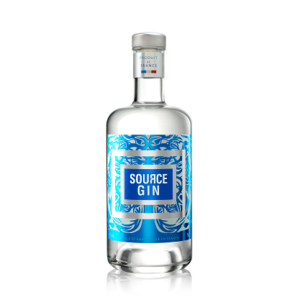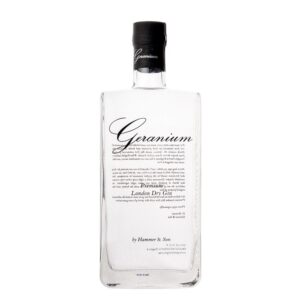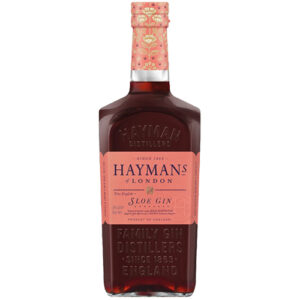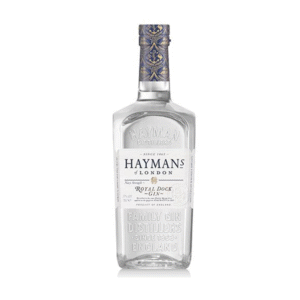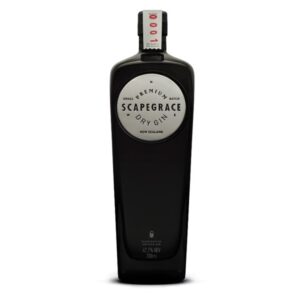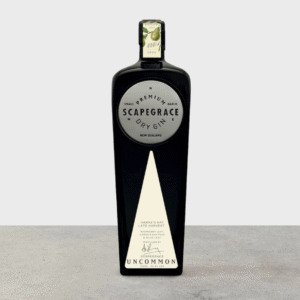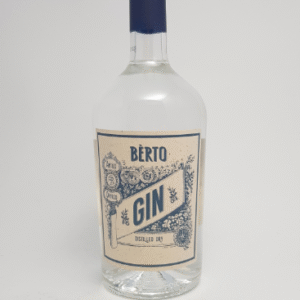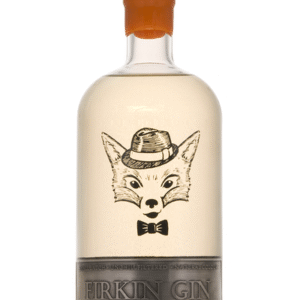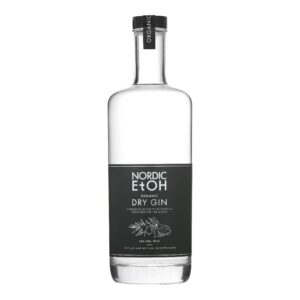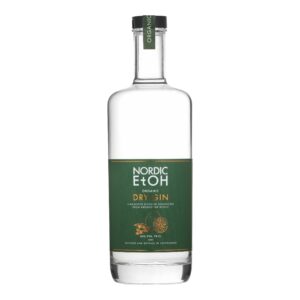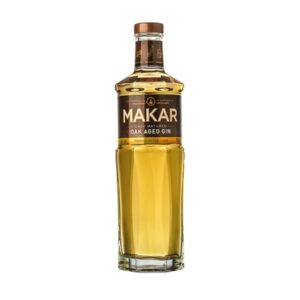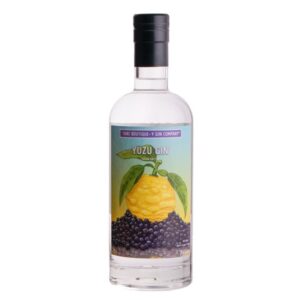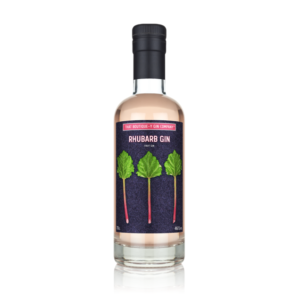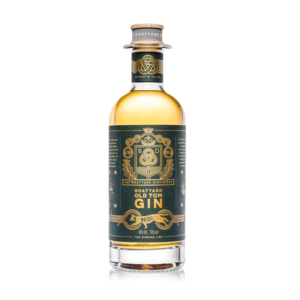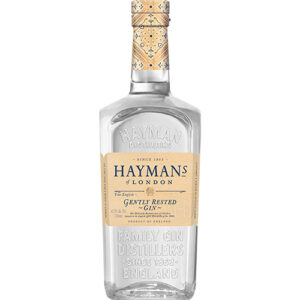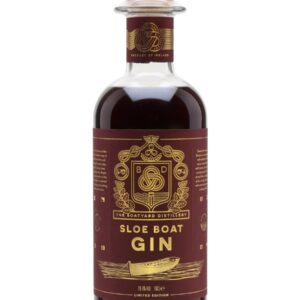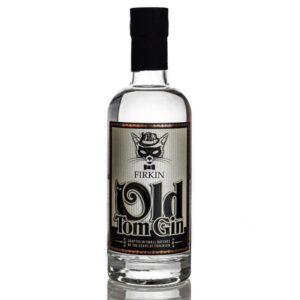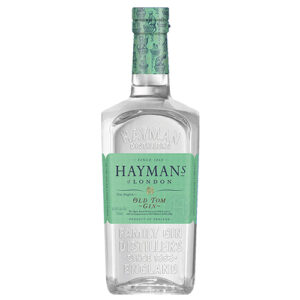Showing 1–24 of 81 resultsSorted by popularity
Gin – The Complete Guide
TL;DR: In Brief
- Gin is characterized by its predominant juniper berry flavor profile and botanical complexity
- It’s primarily produced from neutral grain spirits flavored with juniper berries and other botanicals, and defined by redistillation
- Comes in several styles, including London Dry, Old Tom, and Navy Strength
- Best enjoyed in a classic G&T with quality tonic water or experienced in cocktails like the Martini or Negroni
Disclaimer: This guide is intended for informational purposes for adults over 18 years of age. Vault of Spirits encourages responsible alcohol consumption.
Introduction to Gin
Gin has a rich history and fascinating craftsmanship behind it. From its origins in the Netherlands to its global popularity today, this spirit has evolved to become one of the world’s most cherished.
This guide gives you insight into the production, flavor profiles, and enjoyment of gin, whether you’re a novice or a seasoned enthusiast.
With its distinctive juniper character and versatility in mixology, gin offers a remarkable range of experiences for the discerning palate.
How Did Gin Originate?
From Past to Present
Gin’s story begins in the Netherlands during the 16th century with a medicinal spirit called genever.
Dutch physician Franciscus Sylvius is often credited with creating genever as a medicine for kidney and stomach ailments, infusing neutral spirits with juniper berries for their diuretic properties.
British soldiers encountered this “Dutch courage” during the Thirty Years’ War and brought it back to England, where it evolved into what we now recognize as gin.
The spirit truly took hold in England in the early 18th century, beginning its transformation from medicinal tonic to recreational beverage.
Which Historical Milestones Shaped Gin?
The “Gin Craze” of the early 18th century in London represents a pivotal chapter in gin’s history.
When William of Orange took the British throne in 1688, he imposed heavy taxes on French imports while simultaneously deregulating gin production, leading to rampant, uncontrolled gin consumption.
The British government passed a series of Gin Acts to curb consumption, culminating in the 1751 Gin Act which finally helped restore order.
The invention of continuous distillation in the 19th century revolutionized gin production, allowing for cleaner, more consistent spirits that formed the foundation of modern London Dry Gin.
How Has Gin Influenced Cultural Traditions?
The British Empire spread gin throughout the world, with colonial officers creating the gin and tonic in India as a way to make quinine (used to prevent malaria) more palatable.
During Prohibition in America, gin became the spirit of choice for illegal speakeasies due to its relatively simple production and ability to mask poor-quality base alcohol.
The martini, featuring gin as its star ingredient, became an icon of sophistication and elegance in the 20th century, immortalized by cultural figures like James Bond.
More recently, gin has played a central role in the craft cocktail renaissance, connecting modern drinkers to historical drinking traditions.
Why Is Gin Popular Today?
The “Gin Renaissance” began in the early 2000s with the emergence of premium craft gins showcasing unique botanical blends and artisanal production methods.
Modern consumers are drawn to gin’s botanical complexity and the stories behind different brands, appreciating its versatility in a wide range of cocktails.
Gin has benefited from the cocktail revival, with bartenders rediscovering classic recipes and creating new ones that highlight gin’s unique characteristics.
The low-calorie profile of gin (compared to other spirits) has also appealed to health-conscious drinkers, contributing to its continued popularity.
How Is Gin Produced?
Which Raw Materials Are Used in Production?
Primary ingredients:
- Base Spirit – Usually a neutral grain spirit made from corn, wheat, barley, or rye, providing the alcohol foundation
- Juniper Berries – The defining botanical that gives gin its characteristic piney flavor; legally required in all gin
- Botanicals – A wide variety of herbs, spices, fruits, and roots that contribute complexity and character
Common botanicals include coriander seed, angelica root, citrus peels, cassia bark, orris root, and cardamom, though the specific recipe varies between producers.
Water is also crucial, diluting the spirit to bottling strength and potentially imparting mineral characteristics.
Some contemporary gin makers experiment with unusual botanicals like seaweed, cucumber, lavender, or tea to create distinctive flavor profiles.
How Does the Fermentation Process Work?
Unlike whiskey or brandy, gin production typically begins with a purchased neutral spirit, bypassing the fermentation stage at the gin distillery.
The base alcohol is usually made from fermented grain mash where yeast converts sugars into alcohol over several days.
This fermentation process creates a wash of about 7-10% ABV, which is then distilled multiple times to create a clean, neutral spirit of high alcoholic strength (up to 96% ABV).
The neutral character of this base spirit is intentional, as it serves as a blank canvas for the botanical flavors to shine.
Which Distillation Techniques Are Used?
Common distillation methods:
- Steeping and Redistillation – Botanicals are soaked in the base spirit before being redistilled, producing a balanced, integrated flavor profile
- Vapor Infusion – Botanicals are placed in baskets above the liquid, allowing alcohol vapors to extract delicate flavors without extracting bitter compounds
- Vacuum Distillation – Lower-temperature distillation that preserves fresh, delicate botanical notes that might otherwise be destroyed by heat
London Dry Gin, the most common style, must be distilled to at least 70% ABV and cannot have colorings or flavorings added after distillation.
Some distillers use a combination of techniques, perhaps steeping heartier botanicals like juniper while vapor-infusing delicate elements like citrus peels.
The master distiller’s skill lies in knowing exactly when to make the “cuts” – separating the desirable “heart” of the distillate from the “heads” and “tails.”
What Is the Significance of Aging?
Unlike whiskey or rum, most gin is not aged and is bottled immediately after distillation to preserve the bright, fresh botanical flavors.
Some specialty gins are barrel-aged, drawing inspiration from genever traditions or exploring new flavor dimensions.
Barrel aging typically occurs in oak casks for a few months to a few years, imparting vanilla, caramel, and spice notes while softening the gin’s sharp edges.
Aged gin occupies an interesting middle ground between traditional gin and whiskey, appealing to drinkers who appreciate more robust, complex spirits.
Which Regions Are Known for Gin?
Where Are the Best Varieties Produced?
England, particularly London, represents the spiritual home of modern gin, with a legacy of distilleries producing the quintessential London Dry style.
Scotland has emerged as a powerhouse in craft gin production, leveraging its whisky-making expertise and access to unique local botanicals.
Spain has developed a vibrant “Gintonería” culture, pushing the boundaries of gin presentation with elaborate garnishes and premium tonics.
The United States, Japan, and Australia have thriving craft scenes producing innovative gins that often incorporate local botanical traditions.
How Do Geography and Climate Affect the Taste?
Local botanicals reflect the terroir of different regions – coastal gins might incorporate seaweed or samphire, while tropical regions might use local fruits or spices.
Water source can significantly impact flavor, with differences in mineral content affecting how botanical flavors express themselves.
Climate influences the availability and quality of botanicals, with some distillers harvesting ingredients at specific times of year to capture peak flavors.
Cultural drinking preferences in different regions have driven the development of regional gin styles, from juniper-forward London Dry to more citrus-dominant Mediterranean gins.
What New Trends Are Seen in Gin Production?
Color-changing gins using botanicals like butterfly pea flower create interactive drinking experiences that transform when mixed with tonic.
Sustainability has become a focus, with distillers using locally sourced botanicals, renewable energy, and eco-friendly packaging.
Low and no-alcohol gin alternatives have emerged, using advanced distillation techniques to create complex botanical profiles without the ethanol.
Seasonal and limited-edition releases allow distillers to experiment with innovative flavors while creating collector’s items for enthusiasts.
What Do the Different Quality Designations Mean?
London Dry Gin must be made with all-natural ingredients, redistilled with all flavorings, and cannot contain added sweeteners or colorings.
Plymouth Gin is both a style and a protected geographical indication that can only be produced in Plymouth, England.
Old Tom Gin is a slightly sweeter style that bridges the gap between genever and London Dry, popular in classic cocktails.
Navy Strength indicates gins bottled at or above 57% ABV, a tradition from when the Royal Navy would test gin’s quality by checking if gunpowder soaked in it would still ignite.
How Does Gin Taste?
What Characterizes the Typical Flavor Profile?
Typical aromas:
- Botanical – Juniper, pine, herbaceous notes, garden herbs, floral elements
- Spice – Coriander, cardamom, cinnamon, pepper, nutmeg
- Citrus – Lemon peel, orange zest, grapefruit, bergamot
Juniper’s distinctive piney, resinous character forms the backbone of any gin, ranging from subtle to pronounced.
The mouthfeel is typically clean and crisp, with a warming alcohol presence and medium to dry finish.
Complexity comes from the interplay of various botanicals, creating layers of flavor that unfold sequentially.
How Does the Taste Vary Between Different Styles?
London Dry Gin offers a juniper-forward profile with crisp citrus notes and a clean, dry finish – the most traditional and widely recognized style.
Plymouth Gin presents a softer, slightly earthier character with more root botanicals evident and a touch more sweetness than London Dry.
Old Tom Gin delivers a sweeter profile with rich, rounded flavors that harken back to gin’s historical roots.
Contemporary or New Western gins often dial back the juniper to showcase other botanicals, sometimes featuring unusual ingredients like cucumber, rose, or tea.
How Does the Flavor Develop with Age?
Standard gins are not aged and are intended to be consumed relatively soon after purchase to enjoy their fresh botanical character.
Barrel-aged gins develop amber colors and pick up vanilla, caramel, and spice notes from the wood, with juniper notes becoming more integrated and less dominant.
Extended aging (beyond a year) can transform gin into an entirely different spirit, with woody characteristics potentially overshadowing delicate botanicals.
Some producers experiment with different barrel types (ex-bourbon, sherry, or wine casks) to create unique flavor profiles.
What Signs Reveal High Quality?
Balance is crucial – no single botanical should dominate unless intentionally designed that way.
Complexity reveals itself through distinct beginning, middle, and end notes that evolve on the palate.
Smoothness indicates careful distilling technique with proper “cuts” to remove harsh alcohols.
Finish should be clean and lingering, with botanical echoes remaining after the initial taste has faded.
How Is Gin Best Enjoyed?
What Is the Optimal Serving Method?
The gin and tonic remains the quintessential serving method, ideally with a premium tonic water that complements rather than masks the gin’s botanicals.
Martinis showcase gin’s complexity when combined with just a touch of dry vermouth and perhaps a lemon twist or olive.
Neat sipping of high-quality gins allows appreciation of the full botanical spectrum, particularly for premium or unusual expressions.
Garnishes should enhance the gin’s existing botanical profile – consider citrus peels, fresh herbs, cucumber slices, or even edible flowers.
Which Glass and Temperature Are Ideal?
A copa or balloon glass is perfect for gin and tonics, with its wide bowl capturing aromas and plenty of room for ice and garnishes.
Martini glasses or coupes showcase cocktails where gin is the star, with their stemmed design preventing hand warmth from heating the drink.
Neat gin is best served in a tulip-shaped nosing glass similar to those used for whisky, concentrating aromas at the rim.
Temperature should be chilled but not ice-cold for neat tasting (around 15-18°C), while mixed drinks benefit from proper dilution with quality ice.
How Do You Taste Like an Expert?
Begin with appearance, noting clarity, viscosity, and any subtle coloration that might indicate aging or unusual botanicals.
Nose the gin multiple times, first from a distance and then closer to the glass, identifying the primary aromas and how they change with exposure to air.
Taste with a small sip, allowing the gin to coat your entire palate before swallowing, noting the evolution from initial impression through mid-palate to finish.
Add a few drops of water and repeat the tasting, observing how dilution can open up different flavor dimensions.
Which Dishes Complement Gin?
Seafood, particularly oysters and smoked salmon, pairs wonderfully with gin’s botanical profile and clean finish.
Cucumber-forward dishes echo common gin garnishes and create a refreshing harmony with the spirit.
Charcuterie featuring fennel salami or juniper-cured meats creates complementary flavor bridges.
Citrus desserts like lemon tart or key lime pie can play beautifully against gin’s own citrus notes.
Which Cocktails Can Be Made with Gin?
Which Classic Cocktails Should You Know?
Martini
- Ingredients: 60ml gin, 10ml dry vermouth, lemon twist or olive
- Preparation: Stir with ice and strain into a chilled cocktail glass
- History: Evolved from the Martinez in the late 19th century, becoming drier over time
Negroni
- Ingredients: 30ml gin, 30ml Campari, 30ml sweet vermouth
- Preparation: Stir with ice, strain into an old-fashioned glass with ice, garnish with orange peel
- History: Created in Florence around 1919 when Count Camillo Negroni requested his Americano with gin instead of soda water
Gin Fizz
- Ingredients: 45ml gin, 30ml fresh lemon juice, 15ml simple syrup, soda water
- Preparation: Shake gin, lemon juice, and syrup with ice, strain into a highball glass, top with soda
- History: Popular in the early 20th century as a morning pick-me-up
Which Modern Cocktails Are Worth Trying?
Cucumber Southside combines gin, lime juice, mint, simple syrup, and muddled cucumber for a refreshing contemporary take on the classic Southside.
Bramble features gin, lemon juice, and crème de mûre (blackberry liqueur) for a fruity yet sophisticated modern classic created by Dick Bradsell in 1980s London.
Earl Grey MarTEAni infuses gin with tea, then combines it with lemon juice and simple syrup for a fragrant, elegant sipper.
Gin Basil Smash, created in Germany in 2008, muddles fresh basil with gin, lemon, and sugar for a bright, herbaceous cocktail that’s become internationally renowned.
How Is Gin Enjoyed Neat?
Premium gins can be sipped neat at room temperature or slightly chilled to appreciate their full botanical complexity.
A splash of quality spring water (just a few drops) can help open up the aromas and flavors.
Barrel-aged gins are particularly suited to neat sipping, with their softened edges and added complexity from the wood.
When tasting neat, take small sips and “chew” the gin briefly before swallowing to experience the full flavor development.
Which Homemade Variants Can You Experiment With?
Infuse gin with fresh seasonal fruits like berries, peaches, or citrus for a personalized fruit gin.
Herb-infused gins using rosemary, thyme, or basil create excellent bases for savory cocktails.
Tea-infused gins using Earl Grey, chai, or jasmine tea add aromatic complexity with relatively little effort.
Homemade sloe gin, made by steeping sloe berries in gin with sugar, creates a traditional liqueur perfect for autumn and winter sipping.
What Should You Know Before Buying Gin?
Which Details Should You Pay Attention to When Buying?
Look for transparency about botanical ingredients – quality producers are typically proud to share details about what makes their gin special.
Check the ABV (alcohol by volume) – higher proof gins (43-45% or above) often carry more flavor intensity.
Research the production method, as pot-distilled small-batch gins typically offer more character than mass-produced options.
Consider your intended use – a juniper-forward gin works well in a Negroni, while a citrusy gin might shine in a Gin Fizz.
What Do You Get for Your Money in Different Price Ranges?
Entry-level gins ($15-25) provide basic juniper character suitable for mixed drinks with strong flavors like tonic.
Mid-range options ($25-40) offer greater complexity and balance, working well in both simple highballs and more sophisticated cocktails.
Premium gins ($40-60) present distinctive botanical profiles, greater refinement, and are often smooth enough for neat sipping.
Super-premium and limited editions ($60+) may feature rare botanicals, special aging processes, or exceptional craftsmanship that justifies the higher price point.
How Is Gin Properly Stored?
Store gin upright to minimize contact between the liquid and the bottle closure, which could affect flavor over time.
Keep bottles away from direct sunlight and temperature fluctuations, which can degrade botanical flavors.
Standard gin doesn’t improve with age in the bottle, so it’s best consumed within a year of opening.
Once opened, the high alcohol content preserves gin well, but the botanical flavors may gradually diminish in intensity.
Is Gin a Good Investment?
Unlike whisky or wine, standard gin is not typically collected as an investment, as it doesn’t continue to develop in the bottle.
Limited edition releases from prestigious distilleries occasionally appreciate in value due to their rarity.
Vintage gins from closed distilleries can become collectibles, though more for historical interest than significant financial return.
The most rewarding “investment” in gin is exploring different styles and producers to develop your palate and appreciation.
Which Brands Do We Recommend?
What’s Best for Beginners?
Beefeater London Dry Gin offers a classic, balanced profile with prominent juniper and citrus notes at an accessible price point.
The Botanist from Islay presents a gentle introduction to craft gin with 22 hand-foraged botanicals creating a complex but approachable experience.
Roku Gin from Japan features six traditional Japanese botanicals alongside classic ingredients, providing an elegant, floral entry point to premium gin.
Plymouth Gin delivers a softer, slightly earthier character than London Dry, making it exceptionally versatile for cocktails or G&Ts.
What Will Impress Enthusiasts?
Monkey 47 from Germany’s Black Forest contains 47 botanicals and is bottled at 47% ABV, creating an exceptionally complex and nuanced gin.
Ki No Bi Kyoto Dry Gin divides its botanicals into six different “elements” before distillation, creating a precisely balanced, sophisticated spirit.
Four Pillars Bloody Shiraz Gin infuses their exceptional dry gin with Yarra Valley Shiraz grapes for a purple-hued, spicy-fruity hybrid.
St. George Terroir Gin captures the essence of the California landscape with Douglas fir, bay laurel, and coastal sage.
Which Bottles Are Most Sought After?
Nolet’s Reserve is an ultra-premium saffron and verbena gin from the makers of Ketel One, priced at several hundred dollars per bottle.
Cambridge Distillery’s Anty Gin, made using red wood ants for their formic acid, represents one of the world’s most experimental and limited-production gins.
Spring Gin Dry Hop Limited Edition aged in Cognac barrels combines gin and beer craftsmanship for a truly unique collector’s item.
Vintage bottles of Gordon’s from the mid-20th century are sought by collectors looking to taste historical gin expressions.
Where Do You Get the Most for Your Money?
Tanqueray No. Ten offers exceptional quality at a mid-premium price point, with fresh citrus distillation and remarkable versatility.
Ford’s Gin, developed with input from leading bartenders, delivers perfect cocktail functionality and balance at a very reasonable price.
Sipsmith London Dry Gin helped spark the craft gin revolution and maintains excellent quality and traditional copper pot distillation at an accessible price.
Edinburgh Gin’s core range provides excellent value with distinct, well-crafted expressions that highlight Scottish botanical traditions.
Frequently Asked Questions
What Is Gin?
Gin is a distilled alcoholic beverage defined by its predominant flavor of juniper berries.
It’s typically made by redistilling a neutral grain spirit with juniper and other botanicals, creating a complex, aromatic profile.
Legal definitions vary by region, but most require a minimum of 37.5% ABV and perceptible juniper character.
Unlike many other spirits, gin doesn’t require aging and is defined by its flavoring process rather than its base ingredient.
How Is Gin Produced?
Production begins with a base neutral spirit, usually made from grains like wheat, corn, or barley.
Botanicals are then added either by steeping them directly in the spirit or suspending them in baskets for vapor infusion.
The spirit is redistilled, concentrating the botanical flavors while the distiller makes precise cuts to capture only the best portion.
Finally, the distillate is diluted with purified water to bottling strength, typically 40-45% ABV.
What Characterizes Gin?
Juniper must be the predominant flavor, providing the distinctive piney, resinous character.
A complex botanical profile typically includes some combination of citrus peels, coriander, angelica root, orris root, and cassia bark.
Clear appearance (except for aged or specialty varieties) with a crisp, dry finish.
Versatility in mixology, working well in both simple highballs and complex cocktails.
Where Can You Buy Gin?
Specialty spirits retailers offer the widest selection, including craft and limited-edition expressions.
Online retailers provide access to international brands that may not be available locally.
Distillery tasting rooms often sell exclusive bottlings not available elsewhere.
At Vault of Spirits, we curate a selection of exceptional gins from around the world, ranging from classic expressions to innovative craft offerings.
